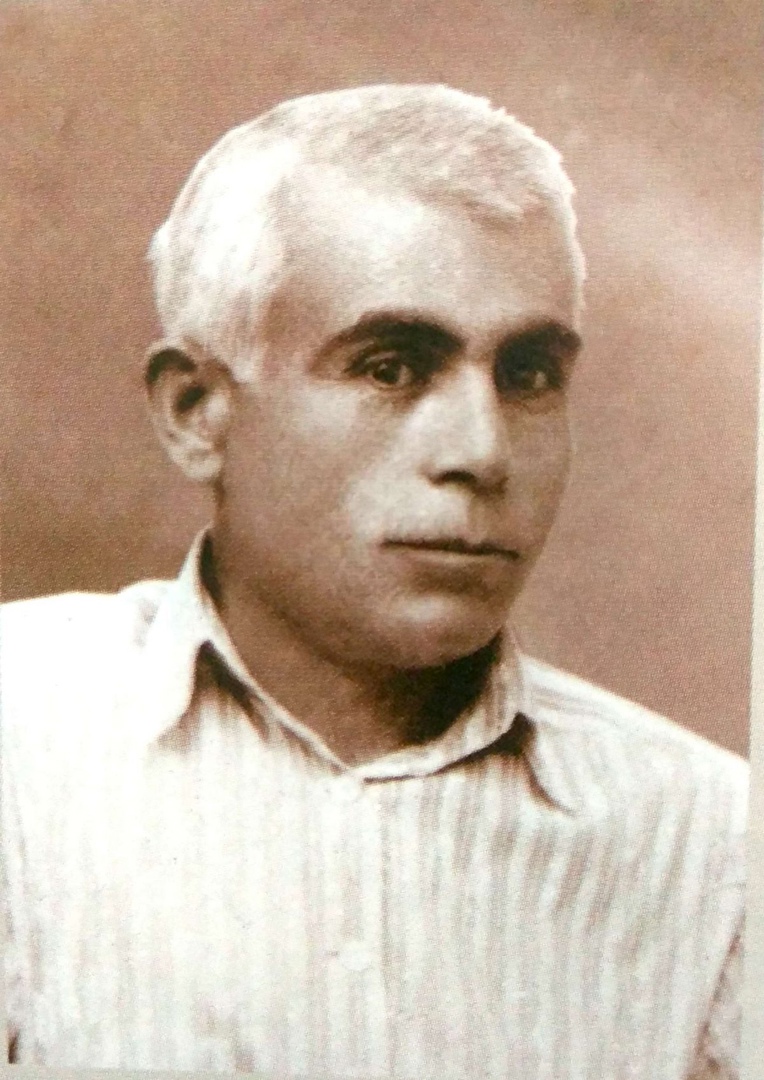Biography - Usein Bodaninksy
USEIN BODANINSKY
Biography
Early years and education
Crimean Tatar historian, artist, art critic, ethnographer, the first director of Bakhchisarai Museum-Reserve.
Usein Bodaninsky was born in Simferopol on December 1, 1877.
In 1888 he finished public school, and in 1895 he graduated from Crimean Tatar teacher's school in Simferopol.
After graduating from Stroganov School in Moscow (1905 – 1907), he taught graphics at the commercial college of Simferopol.
Since 1907, he was the head of the art and industrial school of the branch of Stroganov School, he taught drawing there and was in charge of the training workshop.
Between 1907 and 1909, Usein Bodaninsky lived and worked for long periods in Paris, Dresden, Istanbul.
From 1911 to 1917, he worked as a decorator in St. Petersburg.
In 1912 Usein Bodaninsky was awarded with the Carl Faberge Prize in the jewelry category. Subsequently, he became a member of the jury for awarding this prize.
In 1913 he studied monumental painting in Venice, Siena, Rome, Florence.
Returm to Crimea
In 1916 he returned to Crimea. Since that time, his life was connected with the study of the history of Crimean Tatar people, ethnography and archeology. The knowledge and experience that he had acquired before became very valuable and in demand in Crimea.
In March 1916, he managed to achieve the opening of a branch of the Society for the Protection and Preservation of Historical and Antique Monuments in Bakhchisarai, whose members created Crimean Tatar Art and History Museum.
Thanks to the decisions made by the national self-government bodies of the Crimean Tatars of that time, the opening ceremony of the National Museum in Khan-Sarai was held in Bakhchisarai on November 3, 1917.
On the same day, a school named after Mengli-Geray was opened in Zyndzhyrly-madrasah, along with a teachers' seminary named after Ismail Gasprinsky "Darulmuallimin" for young men and an art college "Sanayy-nefise ve uner mektebi" (Uner Sanai). All this became possible due to Usein Bodaninsky’s research and creative activity.
In the first years of Soviet power in Crimea, the artist headed Bakhchisarai department of the committee for museums and the protection of monuments of art, antiquity, folk life and nature, along with the management of the museum-reserve.
In 1924-1929 he led the ethnographic and archaeological expeditions of the museum to Kyrk-Azizler, Eski-Yurt, Stary Krym, Chufut-kale. During these years, more than 20 scientific papers were published. In 1925, the historian took part in a summer ethnographic expedition and in consulting work during the shooting of the film "Alim" (1926).
In the summer of 1925, the International Art and Industry Exhibition was held in Paris, in which Bodaninsky took an active part in the presentation of Crimean art. Most of the selected exhibits were of ethnographic nature and were provided by Bakhchisarai Museum-Reserve: samples of artwork, men's and women's costumes, carpets, chadors, gold embroidery, embossed crockery, etc. Crimean chadors and embroideries received a medal.
In 1928-1929, an expedition consisting of B.N. Zasypkina, U. Bodaninsky, O. Akchokrakly, excavated the remains of a medieval mosque of the XIV century on Chufut-Kala.
In 1934, Usein Bodaninsky was removed from the post of the head of Bakhchisarai Museum-Reserve.
Between 1934 and 1936, Usein Bodaninsky together with artist M.M. Adamovich, whom he knew from Stroganov School, took part in the decoration of the interiors of the hotel "Moscow"; also, there are works by Usein Bodaninsky in the artistic painting of the Moscow metro.
From 1935 to 1937, Bodaninsky worked as a decorator in Moscow and Georgia.
In 1937 the ethnographer was arrested on charges of nationalist activity in Tbilisi.
On April 17, 1938, Usein Bodaninsky was shot in Simferopol.
Usein Bodanninsky’s scientific and creative heritage is of great importance for Crimean Tatar people, for the study of history and ethnography. The great scientist and artist left behind priceless works that show the historical significance of the Crimean Tatar statehood in Crimea.
In memory of the great scientist and artist, Bakhchisarai Museum-Reserve regularly hosts international conferences "Scientific Readings in Memoriam of Usein Bodaninsky".
Photo
.jpg)
.jpg)
.jpg)
.jpg)
.jpg)
.jpg)
.jpg)
.jpg)
.jpg)
.jpg)


-min.jpg)
-min.jpg)
-min.jpg)